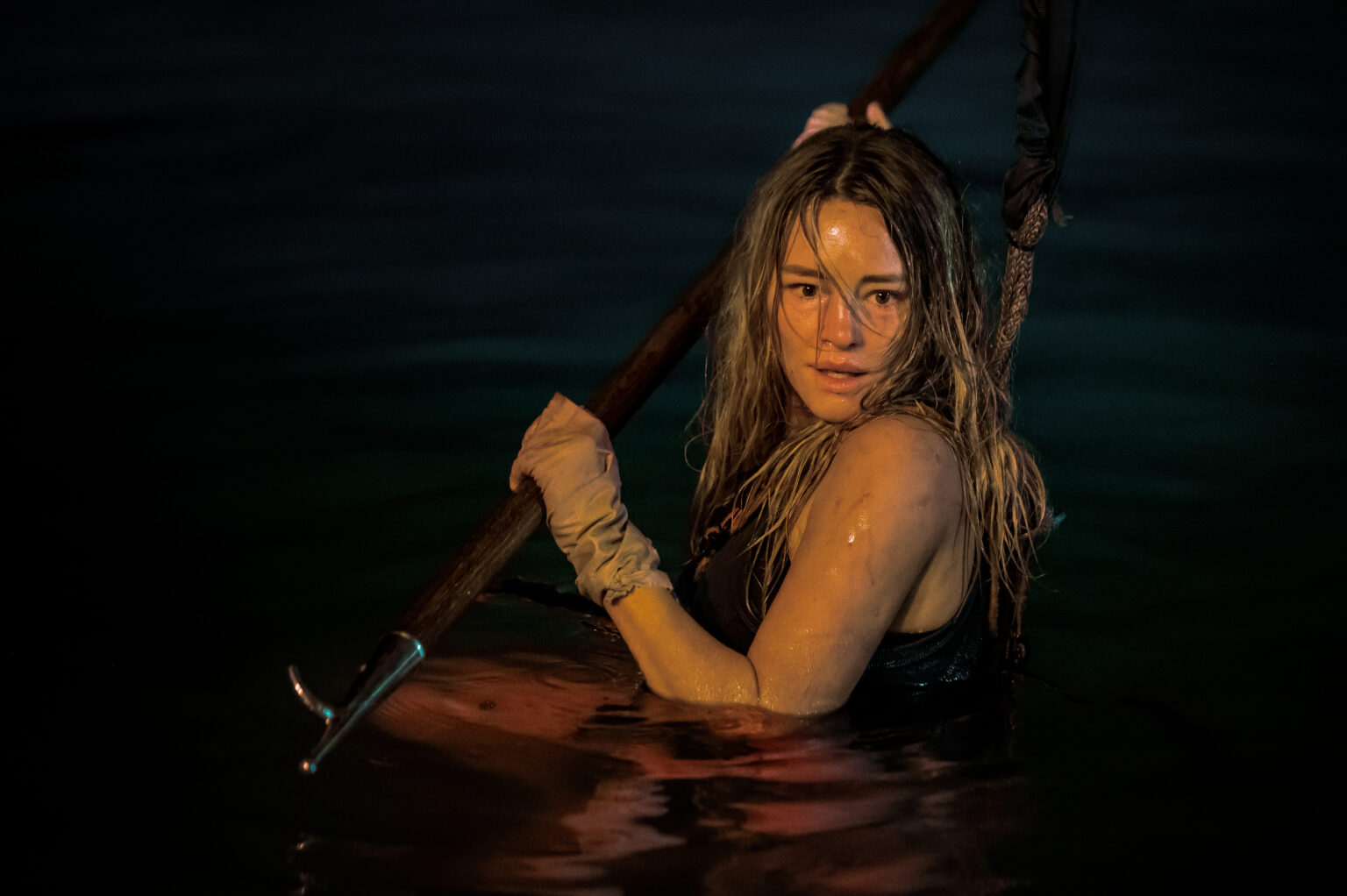Reimagining the Predator: From Fictional Sharks to Human Threats
A half-century has passed since Steven Spielberg’s iconic film “Jaws” ignited widespread fear and fascination by depicting sharks as ruthless predators lurking beneath the ocean’s surface. Today, the landscape of aquatic horror has evolved, shifting focus from the traditional toothy monsters to more human-centric threats. The satirical thriller “Dangerous Animals” exemplifies this modern twist, offering a fresh perspective on survival horror by showcasing a seemingly ordinary man in cargo shorts and flip-flops as the true menace-an unpredictable predator with a sinister agenda.
A New Wave in Survival Horror: Human Predators Take Center Stage
Within the crowded realm of sharksploitation films-characterized by outlandish plots like “Cocaine Shark” and “Ouija Shark”-“Dangerous Animals” stands out as a compelling and gritty Australian import. Unlike its CGI-heavy counterparts, this film delivers a lean, visceral experience that emphasizes realism and psychological tension. Director Sean Byrne, known for “The Devil’s Candy,” crafts a narrative that pits a lone surfer against a serial killer in the vast, unpredictable ocean, challenging the traditional “Jaws effect.” Here, the real danger isn’t the marine predators but a human sociopath with a misogynistic streak, lurking beneath the waves.
The Protagonist’s Journey: From Wanderer to Survivor
Hassie Harrison (“Yellowstone”) stars as Zephyr, a free-spirited American surfer traveling through Australia. Her journey takes a dark turn after a fleeting romantic encounter with Moses (Josh Heuston), a sensitive real estate agent. Following a passionate night, she leaves him behind, only to find herself waking up handcuffed aboard a boat in the middle of the ocean-a scenario reminiscent of the “Saw” franchise’s twisted traps. The film cleverly employs romantic comedy tropes to heighten tension: Zephyr’s struggle to escape becomes a metaphor for her emotional vulnerability and desire to break free from her past.
The Villain: A Charismatic but Deadly Guide
Jai Courtney delivers a memorable performance as Bruce Tucker, a charismatic yet sadistic boat captain and diving guide. A local legend with a dark secret, Tucker has a disturbing hobby-kidnapping female tourists and turning them into the stars of his homemade snuff films. His persona is a twisted blend of charm and menace, fueled by a childhood encounter with a great white shark that left him scarred and convinced of his dominance over weaker creatures. Tucker’s reliance on sharks as tools of murder adds a layer of homage to classic horror, while his manipulative charisma keeps viewers guessing about his true intentions.
Visual and Tonal Elements: From Bright to Foreboding
Cinematographer Shelley Farthing-Dawe captures the stunning yet ominous Australian coastline, transforming sun-drenched scenes into foreboding landscapes that mirror the film’s shifting tone. Underwater sequences featuring real shark footage lend an unsettling sense of grace and danger, elevating the film’s tension. Throughout, a blend of horror and dark humor punctuates the narrative-Tucker’s antics, from singing “Baby Shark” to drunken dance moves, provide comic relief amid the suspense. However, an overbearing soundtrack occasionally undermines the tension, detracting from the film’s atmospheric potential.
The Power of Performance: A Dual Focus
While Jai Courtney’s portrayal of Tucker is undeniably captivating-delivering a mix of menace and dark humor-Hassie Harrison’s portrayal of Zephyr anchors the film with resilience and intelligence. Her character’s backstory hints at childhood wounds that have shaped her survival instincts, though the film doesn’t delve deeply into these themes. Instead, it emphasizes her physical and mental resilience as she navigates a series of increasingly perilous situations, embodying the archetype of the final girl.
Narrative Structure and Critical Reception
Despite its engaging premise, “Dangerous Animals” struggles with pacing, as repetitive escape attempts and predictable twists hinder its momentum. The screenplay by Nick Lepard attempts to introduce new layers of tension but ultimately falls into familiar territory, culminating in an ending that borders on sentimentality. Nevertheless, the film maintains a self-aware tone, refusing to take itself too seriously-an approach that aligns with its satirical edge. Its world premiere at the Cannes Film Festival’s Directors’ Fortnight underscores its artistic ambitions, even if it doesn’t quite reach the heights of classic survival horror.
The Future of Aquatic Horror: Human Threats in the Spotlight
While Spielberg’s “Jaws” still holds its place as the quintessential shark film, contemporary horror increasingly explores the darker facets of human nature lurking beneath the surface. “Dangerous Animals” exemplifies this shift, highlighting that the most terrifying predators may not be the creatures of the deep but the humans who manipulate and threaten others for their own twisted purposes. As the waters become more unpredictable, so too does the nature of horror-reflecting a world where the greatest dangers often come from within.
Final Thoughts: A Summer of Suspense and Reflection
Currently screening in theaters, “Dangerous Animals” offers a gritty, provocative take on survival horror, blending visceral violence with dark humor and social commentary. With a runtime of 98 minutes, it delivers a tense, thought-provoking experience that challenges viewers to reconsider what truly makes a predator. As the summer season heats up, so does the tension beneath the surface-reminding us that sometimes, the most dangerous animals are the ones we least expect.

